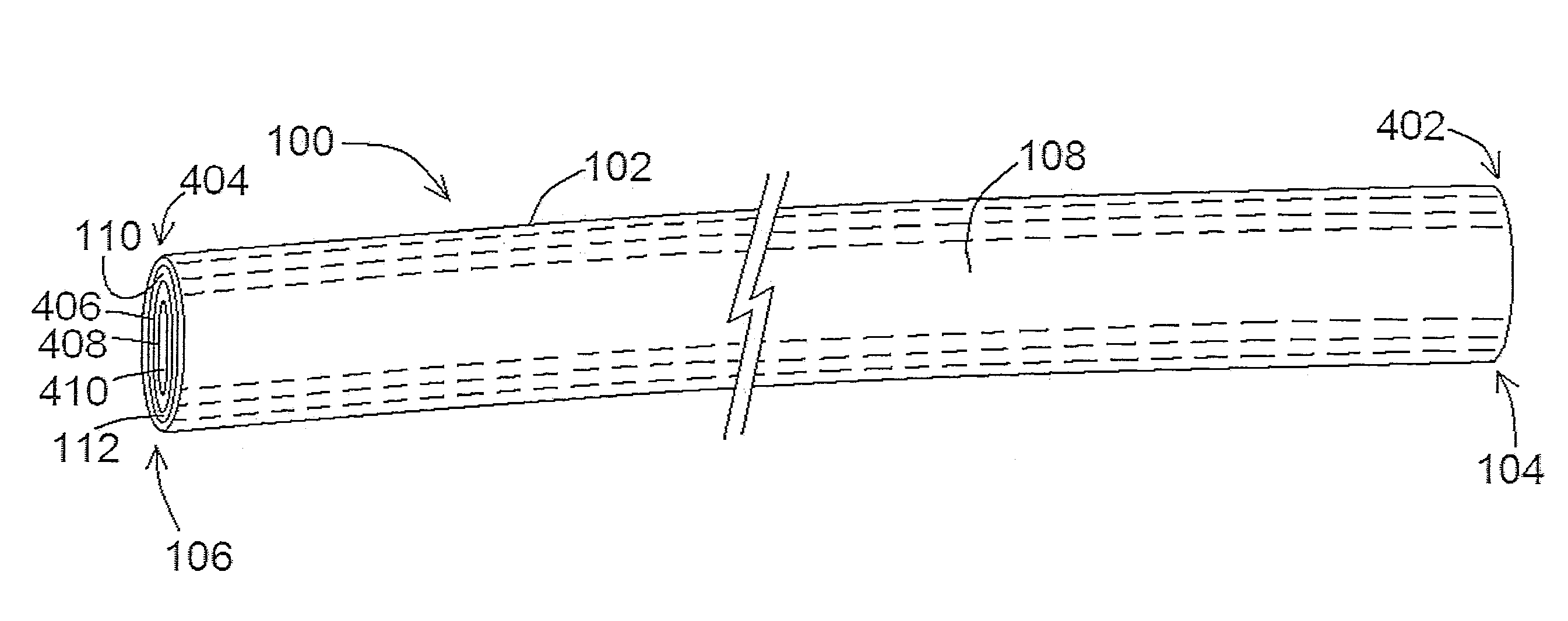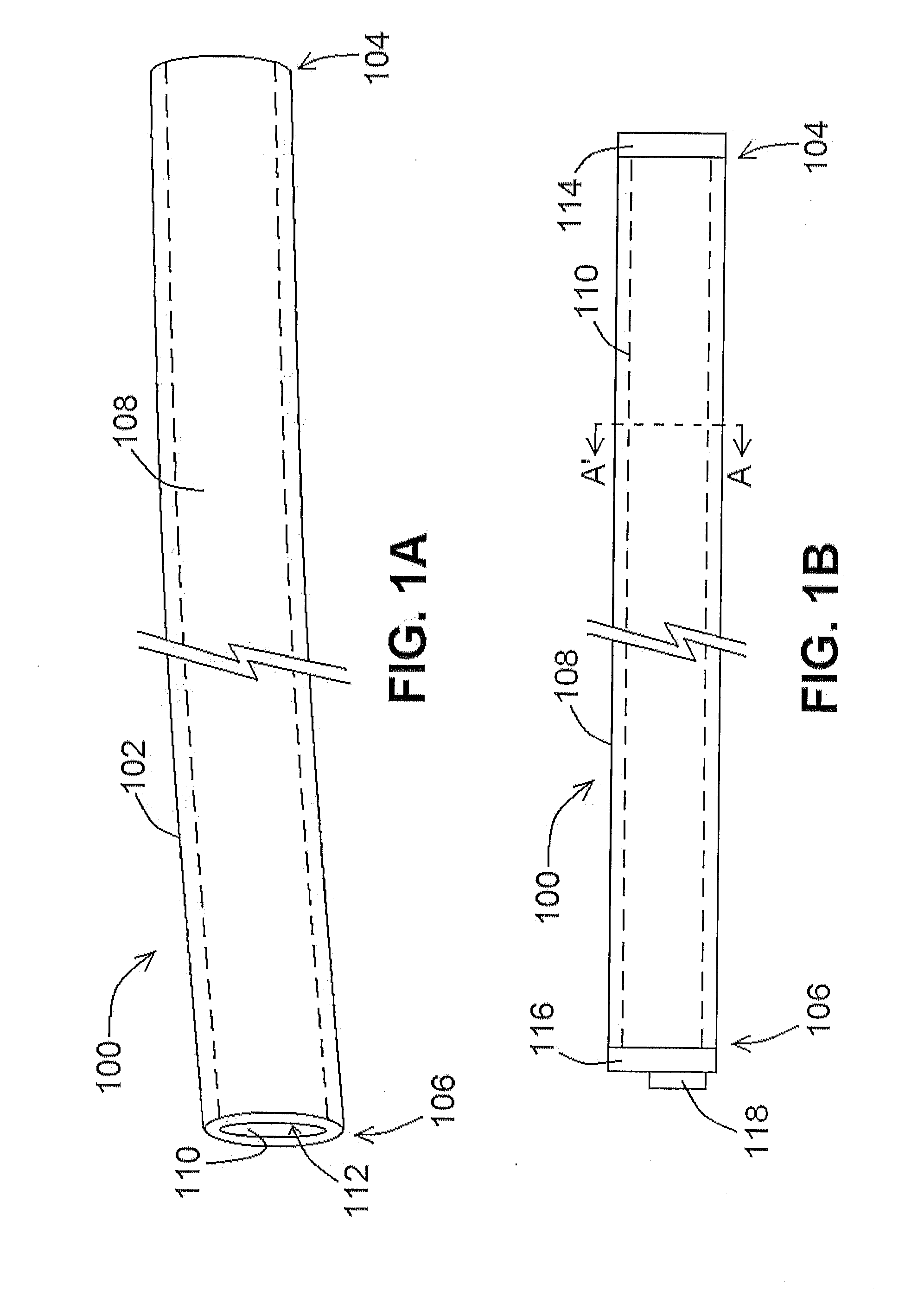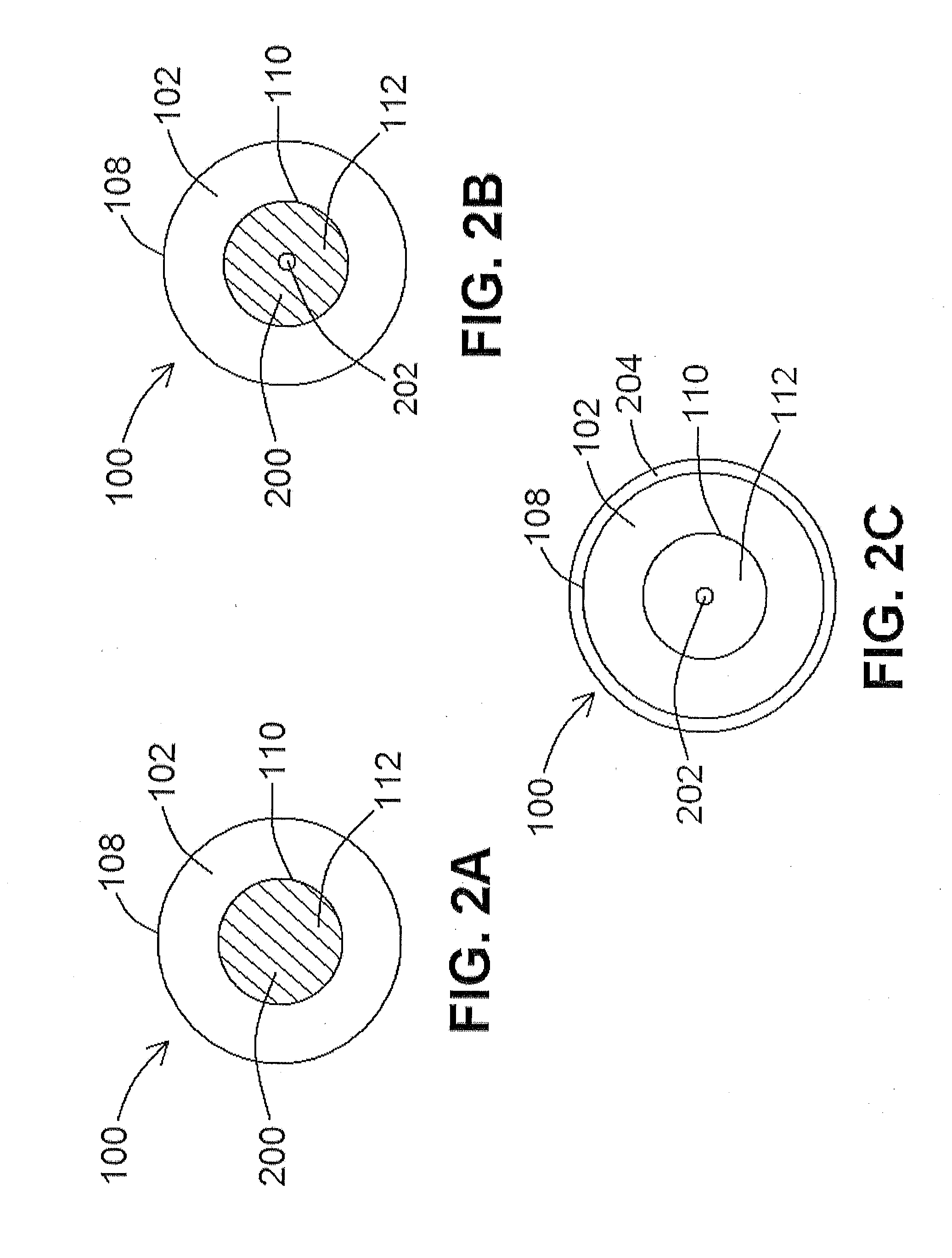Implantable biomedical device leads comprising liquid conductors
a biomedical device and lead technology, applied in the direction of internal electrodes, transvascular endocardial electrodes, therapy, etc., can solve the problems of conductor fracture, ineffective cardiac rhythm therapy, and significant mechanical and chemical stresses on the implantable lead in situ, so as to reduce the likelihood of unintended disconnection of the lead, reduce the likelihood of loss or reduction of an electrical signal, and be sufficiently pliable
- Summary
- Abstract
- Description
- Claims
- Application Information
AI Technical Summary
Benefits of technology
Problems solved by technology
Method used
Image
Examples
example 1
[0117]According to at least one exemplary embodiment of a lead 100 of the present disclosure, a unipolar liquid metal lead 100 was developed by infusing liquid gallium (Ga 4N, Recapture Metals) into a polyurethane tube. The tube dimensions were comparable to those of a conventional cardiac pacing lead, having a length of 610 mm and an inner diameter of 1.7 mm. The tube was filled with Ga such that the lumen appeared free of any voids and terminated on each end with segments of 22 AWG solid core wire. The resultant liquid lead 100 was connected to a bipolar amplifier (Kepco BOP100-2M) operating in a constant current mode. DC currents of varying amplitudes were driven through lead 100, and the voltage across the lead was measured using an oscilloscope (Agilent 54621A). Using Ohm's law, it was determined that the resistance of lead 100 was 61 mΩ, which is consistent with the predicted resistance of a column of Ga having the same dimensions.
[0118]The time-varying characteristics of the ...
example 2
[0126]According to at least one exemplary embodiment of a lead 100 of the present disclosure, the biocompatibility of liquid Ga for use as an electrically conductive composition 200 within a biomedical device lead 100 was examined by exposure of Ga to cells in vitro. Cells, including human umbilical vein endothelial cells (HUVECs), were cultured on tissue culture plastic in fully supplemented growth media. The cells were cultured at two densities, namely 170E3 cell / well and 85E3 cells / well, and Ga droplets were added to each well to determine whether acute Ga exposure would affect cell viability and proliferation (control cells did not receive Ga droplets). While such exposure is not representative of any immunological response to implanted Ga, this result suggests that in vitro exposure will have no effect on cell survival or growth. The cells tested according to at least one exemplary embodiment were in direct contact with sterilized liquid Ga for 24 h and 48 h in a 37° C., 5% CO2...
PUM
 Login to View More
Login to View More Abstract
Description
Claims
Application Information
 Login to View More
Login to View More - R&D
- Intellectual Property
- Life Sciences
- Materials
- Tech Scout
- Unparalleled Data Quality
- Higher Quality Content
- 60% Fewer Hallucinations
Browse by: Latest US Patents, China's latest patents, Technical Efficacy Thesaurus, Application Domain, Technology Topic, Popular Technical Reports.
© 2025 PatSnap. All rights reserved.Legal|Privacy policy|Modern Slavery Act Transparency Statement|Sitemap|About US| Contact US: help@patsnap.com



